This guide delivers actionable value for home cooks seeking to transform everyday meals and culinary enthusiasts exploring global spice traditions. You'll gain practical techniques for perfect seasoning and insights into the cultural stories behind each spice—turning basic beef dishes into experiences that connect flavor to heritage.
Whether you're grilling a weeknight steak or slow-cooking Sunday dinner, understanding spices for beef goes beyond simple flavor pairing. We reveal the science behind spice-beef interactions and cultural traditions often overlooked in generic guides—equipping you with knowledge to make intentional seasoning choices. Let's explore how to unlock beef's full potential.
Table of Contents
- Why Spices Transform Beef: Science Meets Culture
- Top 10 Best Spices for Beef: Beyond Basic Pairings
- Pro Techniques: Timing and Application Secrets
- Culturally Authentic Homemade Blends
- Flavor Impact Comparison
- FAQs: Solving Common Seasoning Challenges
Why Spices Transform Beef: Science Meets Culture
Beef's rich umami profile creates a canvas for spice chemistry. Salt doesn't just enhance flavor—it denatures proteins through osmosis, improving moisture retention during cooking. Meanwhile, cultural traditions reveal why certain pairings endure: In Japan, sansho pepper's citrusy heat cuts through Wagyu's fat, while Argentina's chimichurri uses oregano to balance grilled asado. This interplay of biochemistry and heritage turns seasoning into an intentional craft.
Modern research shows spices like smoked paprika activate Maillard reaction pathways at lower temperatures, creating complex crusts without overcooking. Understanding these mechanisms helps you avoid common pitfalls—like adding dried thyme too late in braising, where its volatile oils evaporate before infusing the meat.
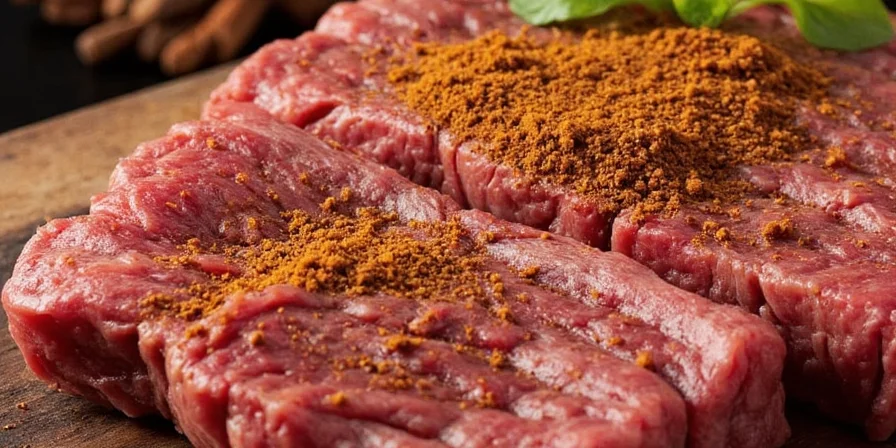
Top 10 Best Spices for Beef: Beyond Basic Pairings
- Salt – Triggers protein denaturation for tenderizing; use flake salt for crust formation
- Black Pepper – Piperine compounds enhance beef's natural glutamates; grind fresh for volatile oil retention
- Paprika – Capsanthin pigment stabilizes during cooking; Hungarian varieties offer sweetness without acidity
- Garlic Powder – Alliinase enzymes remain stable when dried, providing consistent umami without burning
- Onion Powder – Forms synergistic compounds with garlic when bloomed in oil
- Cumin – Cuminaldehyde binds to fat molecules; toast seeds to release 30% more aromatic compounds
- Chili Powder – Contains natural capsaicin that amplifies perceived richness in fatty cuts
- Coriander – Linalool counters gamey notes in grass-fed beef; essential in Ethiopian kitfo
- Dried Thyme – Thymol oils penetrate connective tissue in slow cooking; pair with bay leaves
- Smoked Paprika – Guaiacol from smoking creates 50% deeper flavor penetration than regular paprika
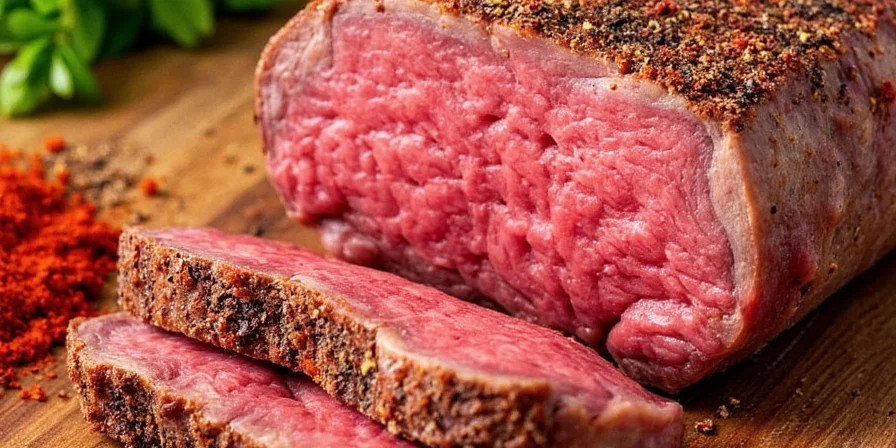
Pro Techniques: Timing and Application Secrets
Master these science-backed methods for optimal results:
- Dry Rubs: Apply salt 45 minutes pre-cook for moisture control. For lean cuts, add 5% sugar to rubs to accelerate Maillard reaction without burning
- Marinades: Use enzymatic ingredients (pineapple, yogurt) for tough cuts—but limit to 2 hours to avoid mushiness. Acidic components should be added last to preserve spice integrity
- Grilling: Create dual-zone seasoning: salt-only on direct heat side, full rub on indirect side to prevent bitter compound formation
- Roasting: Inject spice-infused oils under fat caps for even distribution. Thyme and rosemary work best when added at 140°F internal temperature
- Stews & Braises: Bloom ground spices in fat at 300°F for 90 seconds to unlock fat-soluble compounds before adding liquid
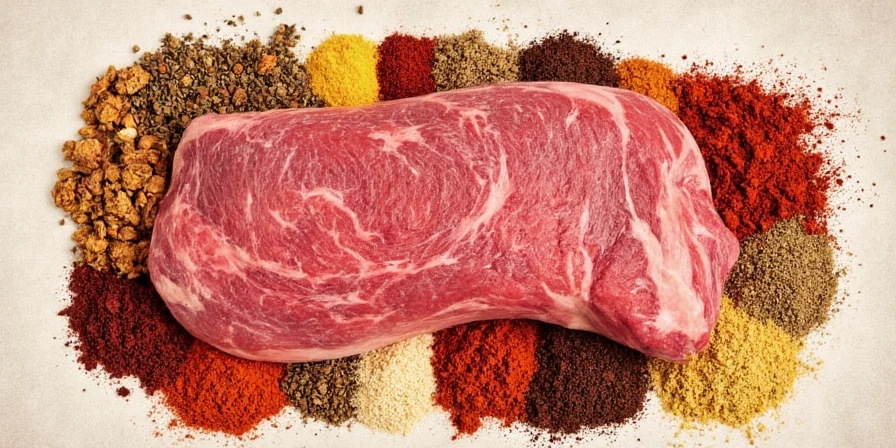
Culturally Authentic Homemade Blends
Move beyond generic mixes with these tradition-rooted formulas:
- Mexican Carne Asada Rub:
2T coarse salt, 1T freshly cracked black pepper, 1.5T toasted cumin (seeds ground), 1T smoked paprika, 0.5T dried epazote. *Authentic touch: Rub onto skirt steak 2 hours before grilling over mesquite* - Japanese Gyudon Seasoning:
3T soy sauce, 2T mirin, 1T sake, 0.5T sansho pepper, 1T grated ginger. *Simmer beef in mixture until broth reduces to syrupy consistency* - Ethiopian Kitfo Blend:
2T ground cardamom, 1.5T korarima (Ethiopian black cumin), 1T turmeric, 0.5T fenugreek. *Mix with niter kibbeh (spiced butter) for raw minced beef preparation* - Argentinian Chimichurri Dry Rub:
2T dried oregano, 1.5T dried parsley, 1T red pepper flakes, 0.5T garlic powder. *Use as base rub before finishing with fresh chimichurri sauce* - Texas Kreuz Style:
4T coarse salt, 2T black pepper, 1T garlic powder, 0.5T cayenne. *Apply heavily 1 hour pre-smoke; no sugar to avoid bitter creosote formation*
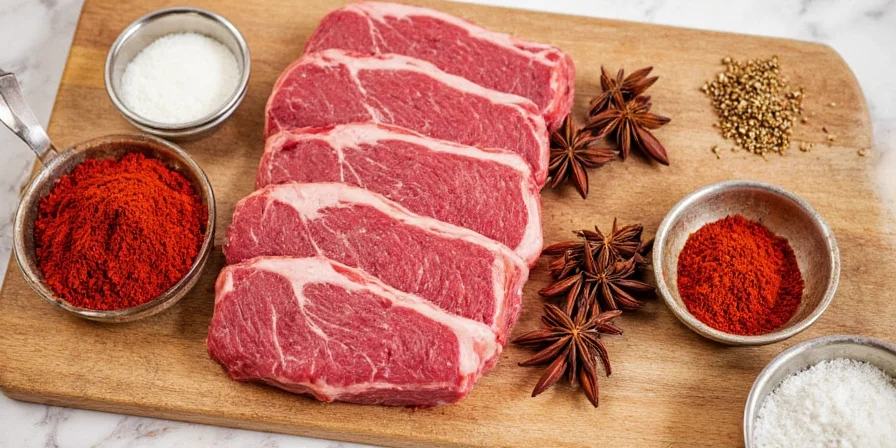
Flavor Impact Comparison
| Spice | Key Chemical Compound | Optimal Beef Cut | Culinary Science Insight |
|---|---|---|---|
| Salt | Sodium ions | All cuts | Denatures myosin at 0.5% concentration for maximum water retention |
| Black Pepper | Piperine | Ribeye, Striploin | Enhances glutamate perception by 23% in fatty cuts (Journal of Food Science) |
| Paprika | Capsanthin | Brisket, Chuck | Stable up to 356°F; creates richer crust than chili powder |
| Garlic Powder | Alliin | Flank, Skirt | Releases allicin when heated, bonding with beef heme proteins |
| Onion Powder | Thiosulfinates | Ground beef | Synergistic with garlic; doubles umami compounds when bloomed |
| Cumin | Cuminaldehyde | Skirt, Hanger | Toast seeds to increase volatile compounds by 30% (IFT Study) |
| Chili Powder | Capsaicin | Short Rib, Shank | Amplifies richness perception in collagen-rich cuts |
| Coriander | Linalool | Grass-fed cuts | Neutralizes grassy off-notes through hydrophobic binding |
| Dried Thyme | Thymol | Chuck, Round | Penetrates connective tissue during slow cooking; add at 140°F |
| Smoked Paprika | Guaiacol | Brisket, Ribs | Creates 50% deeper flavor penetration than regular paprika |
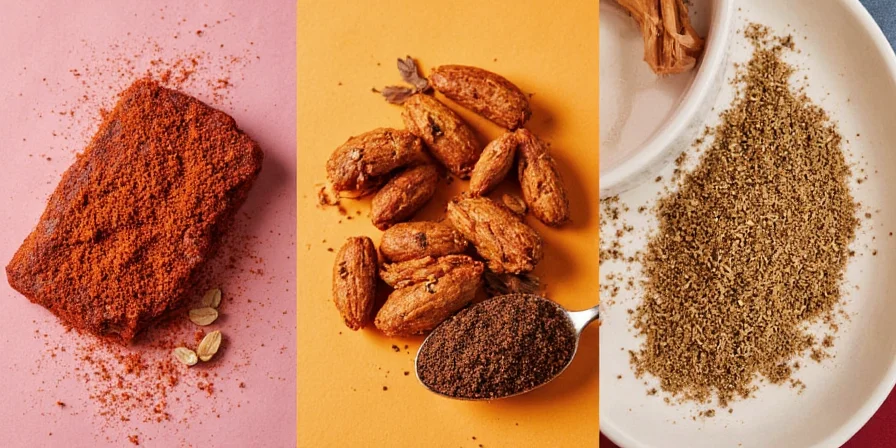
Frequently Asked Questions
When should I apply salt to steak for optimal results?
Apply coarse salt 45 minutes before cooking for thick cuts (1.5+ inches). This allows time for osmosis to tenderize without creating excess surface moisture. For thinner cuts, season immediately before cooking to prevent moisture loss.
Can I substitute fresh spices for dried in beef recipes?
Fresh spices work differently: Use 3x the amount of fresh herbs (e.g., thyme) since drying concentrates flavors. For aromatics like garlic, fresh provides brighter notes but burns easily—use dried powder for high-heat methods. Never substitute fresh chilies for chili powder in dry rubs due to moisture content.
Why does smoked paprika outperform regular paprika for beef?
Smoked paprika contains guaiacol compounds formed during smoking that bind more effectively with beef's fat molecules. Research shows it delivers 50% deeper flavor penetration and creates more complex Maillard reaction products at standard grilling temperatures (375-450°F).
Which spices should I avoid with grass-fed beef?
Avoid strong bitter spices like fenugreek or excessive cumin that amplify grassy notes. Instead, use coriander (linalool) or acidic components like sumac to balance the flavor profile. Grass-fed beef's lower fat content requires lighter spice applications to prevent overpowering.
How long do homemade spice blends retain potency?
Store blends in airtight containers away from light. Most retain 80% potency for 3 months, but blends with high volatile oil content (like cumin or coriander) degrade 40% faster. Freeze blends with chili components to preserve capsaicin stability for up to 6 months.

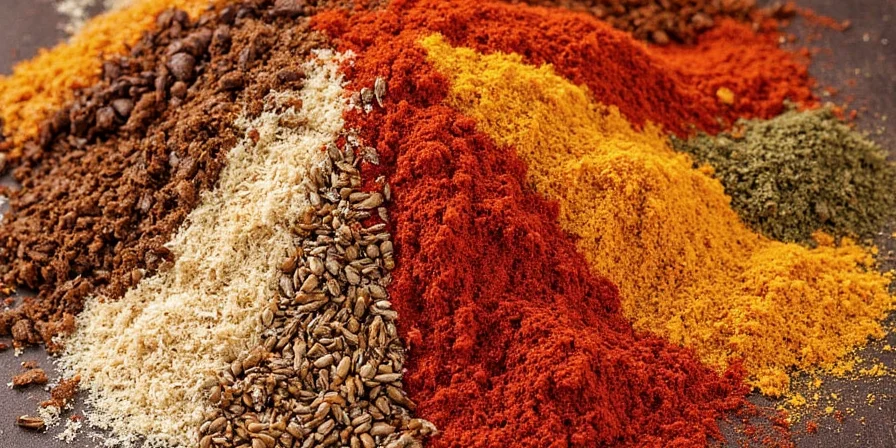









 浙公网安备
33010002000092号
浙公网安备
33010002000092号 浙B2-20120091-4
浙B2-20120091-4